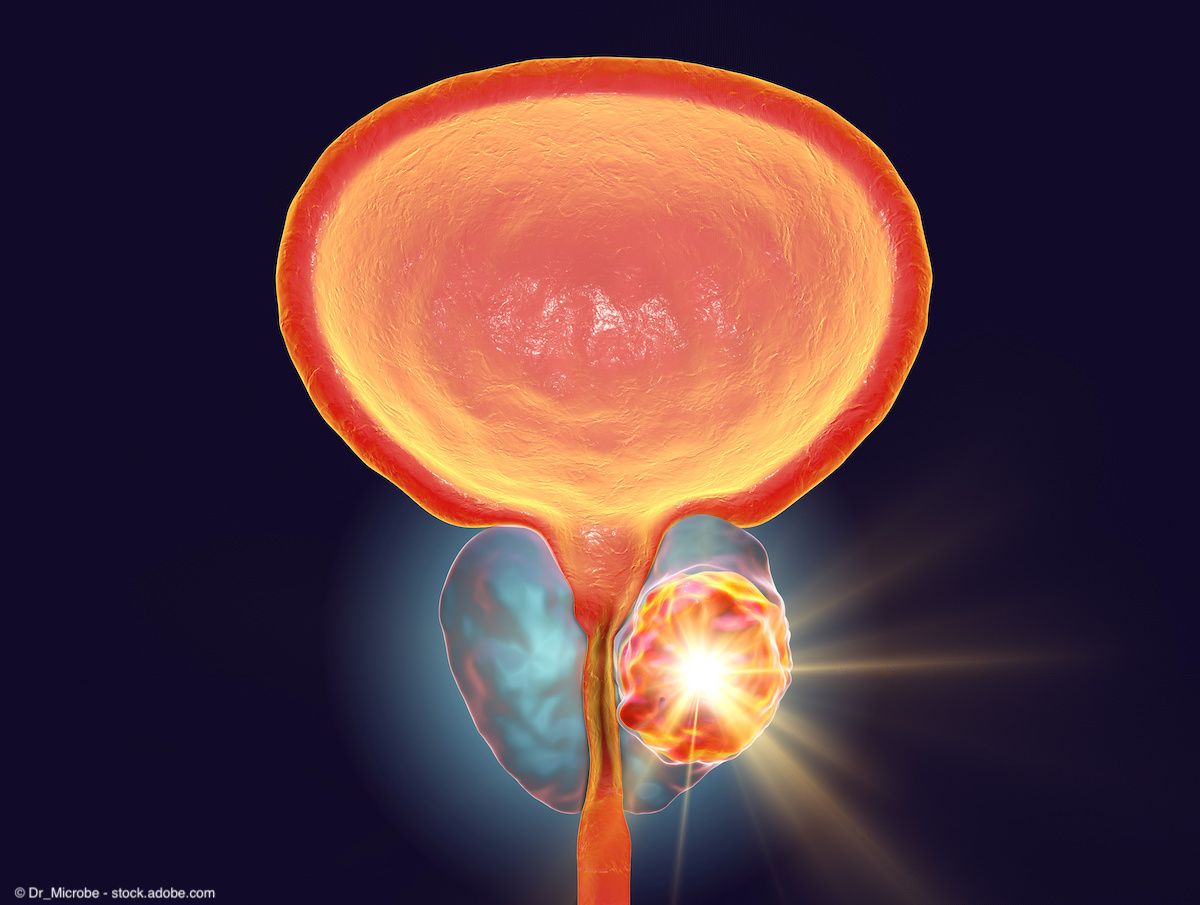News
Article
Urology Times Journal
Darolutamide associated with more favorable tolerability vs other ARIs in nmCRPC
Author(s):
“Our study reveals potential differences in tolerance and effectiveness of AR inhibitors in practice, which can help clinicians and patients with treatment decisions," says Daniel J. George, MD.
Published data from the observational DEAR study (NCT05362149) assessing real-world outcomes with second-generation androgen receptor (AR) inhibitors show that darolutamide (Nubeqa) is associated with more favorable tolerability compared with enzalutamide (Xtandi) and apalutamide (Erleada) in the treatment of patients with nonmetastatic castration-resistant prostate cancer (nmCRPC).1
Patients who received darolutamide had a lower incidence of the composite end point event.

According to the authors, this may translate to an effectiveness advantage in routine clinical practice.
“Real-world evidence studies provide a broader context to randomized controlled trials and support treatment choice decisions when head-to-head data are not available,” said lead author Daniel J. George, MD, a medical oncologist at Duke University Health, Durham, North Carolina, in correspondence with Urology Times®. “Our study reveals potential differences in tolerance and effectiveness of AR inhibitors in practice, which can help clinicians and patients with treatment decisions.”
The primary outcome measure for the study was a composite of 2 end points: treatment discontinuation and progression to metastatic CRPC (mCRPC).2 Each end point was also assessed separately.
Overall, data showed that patients who received darolutamide had a lower incidence of the composite end point event, which occurred in 37% of patients who received darolutamide vs 52.6% of patients who received enzalutamide and 52.4% of patients who received apalutamide. Treatment with darolutamide continued to show a lower risk of the composite end point compared with enzalutamide (risk reduction, 33.8%; HR, 0.66; 95% CI, 0.53-0.84) and apalutamide (risk reduction, 35.1%; HR, 0.65; 95% CI, 0.48-0.88) even after adjusting for baseline covariates.
Assessed separately, 30.4% of patients in the darolutamide cohort discontinued treatment compared with 40.8% of patients in the enzalutamide cohort and 46% of patients in the apalutamide cohort. Progression to mCRPC occurred in 17.7% of patients in the darolutamide arm vs 28.3% in the enzalutamide arm and 27.8% in the apalutamide arm.
These findings were also consistent after adjusting for baseline covariates, with darolutamide associated with a 27.4% and 39.1% lower risk of discontinuation compared with enzalutamide (HR, 0.73; 95% CI, 0.56-0.94) and apalutamide (HR, 0.61; 95% CI, 0.44-0.85), respectively. Additionally, darolutamide was associated with a 40.6% reduction in the risk of progression to mCRPC compared with enzalutamide (HR, 0.59; 95% CI, 0.43-0.82) and a 35.3% reduction (HR, 0.65; 95% CI, 0.42-0.99) compared with apalutamide.
No differences in either outcome were found between enzalutamide and apalutamide.
Regarding safety, at least 1 reported adverse event (AEs) was found for 24.9% (90) of patients in the darolutamide arm, 29.3% (112) of patients in the enzalutamide arm, and 30.2% (38) of patients in the apalutamide arm. AEs of special interest were recorded for 14.9% (54) of patients in the darolutamide cohort, 17.5% (67) of patients in the enzalutamide cohort, and 22.2% (28) of patients in the apalutamide cohort.
Overall, DEAR was an observational cohort study that included 870 adult patients with nmCRPC who initiated treatment with a novel AR inhibitor between August 1, 2019 and March 31, 2022. Patients had no prior treatment with novel hormonal therapy. Data were obtained from electronical medical records from the Precision Point Specialty network of urology practices in the United States.
Among all patients included in the study, 362 (41.6%) received darolutamide, 382 (43.9%) received enzalutamide, and 126 (14.5%) received apalutamide. The average age was approximately 79 years. In total, 585 (67.2%) of patients were White, 187 (21.5%) of patients were Black or African American, and 98 (11.3%) were another race or race was unknown.
Observed baseline characteristics were similar across cohorts. Median follow-up was also consistent between cohorts, with a range of 22.2 to 23.3 months.
According to the authors, “Further studies are needed to confirm these results in different health care settings and geographies, using data sources linked with mortality statistics, and following up patients for longer periods.”1
References
1. George DJ, Morgans AK, Constantinovici N, et al. Androgen receptor inhibitors in patients with nonmetastatic castration-resistant prostate cancer. JAMA Netw Open. 2024;7(8):e2429783. doi:10.1001/jamanetworkopen.2024.29783
2. An observational study, called DEAR, to learn more about treatment with darolutamide, enzalutamide and apalutamide in men with non-metastatic castration-resistant prostate cancer in real world settings (DEAR). ClinicalTrials.gov. Last updated March 20, 2024. Accessed September 5, 2024. https://clinicaltrials.gov/study/NCT05362149

Newsletter
Stay current with the latest urology news and practice-changing insights — sign up now for the essential updates every urologist needs.






























